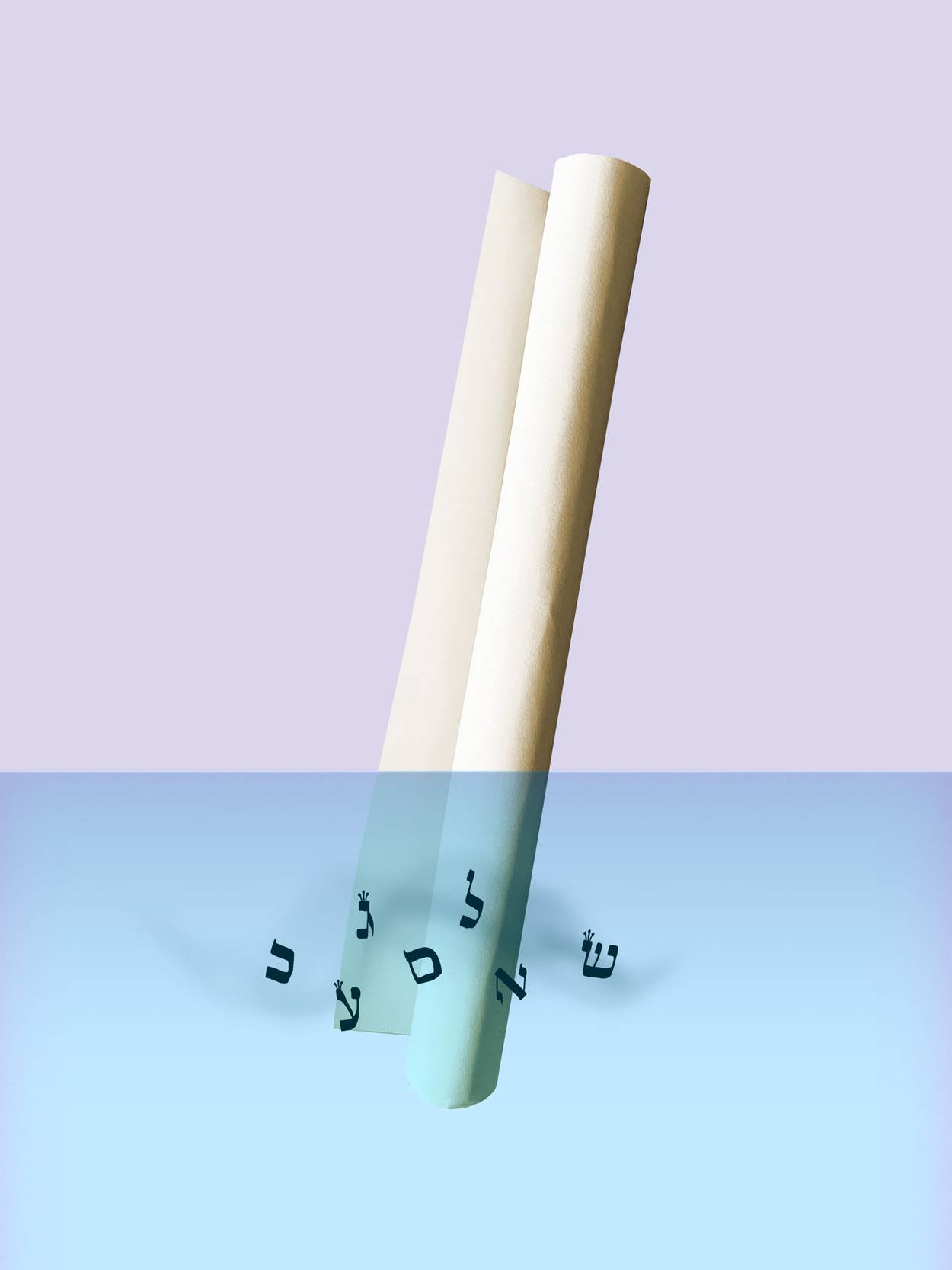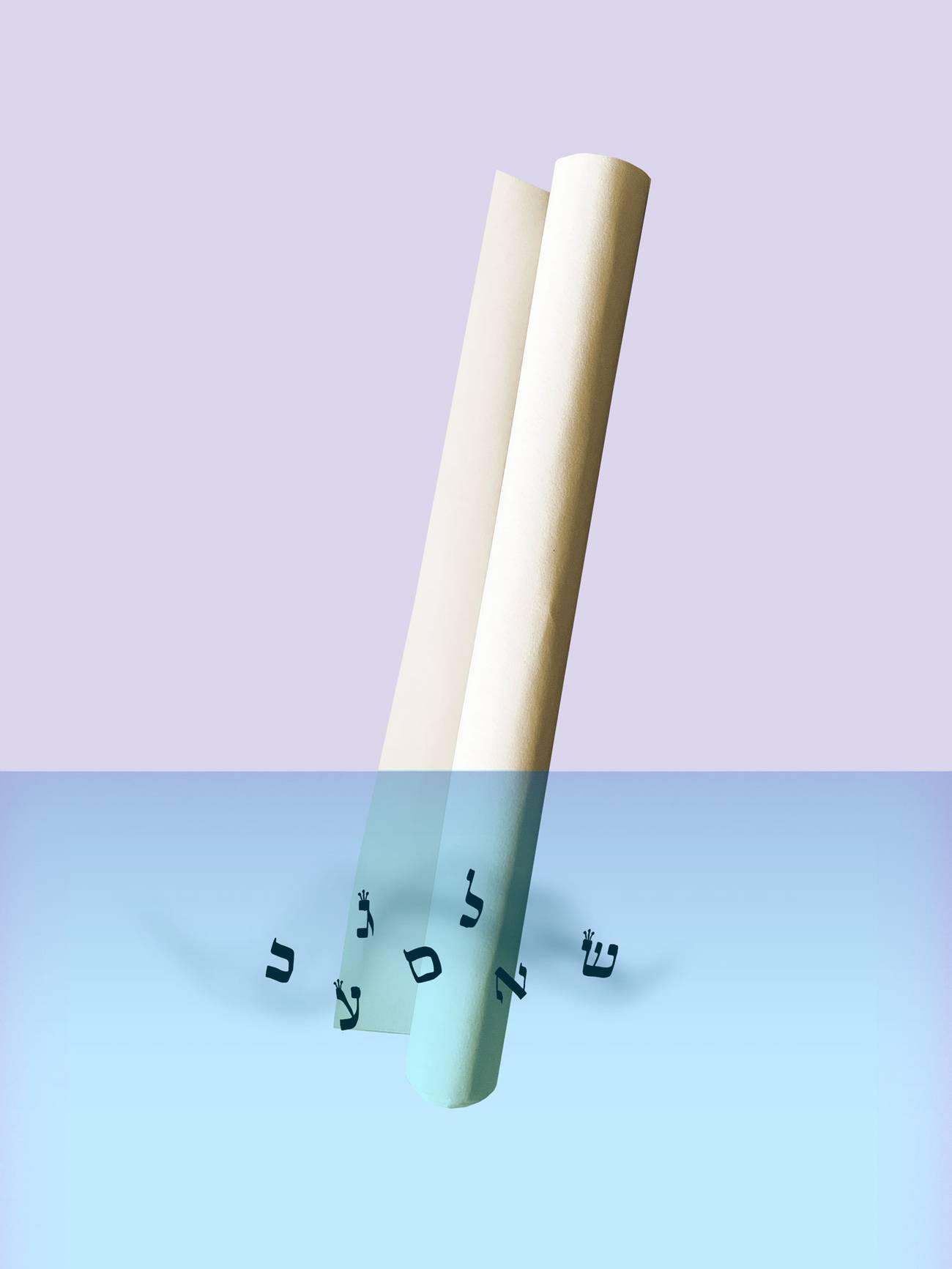Faith After Faith
In Tractate Sotah, the Talmud gives us a master class in how to restore trust




In 12th grade, I lost my mother’s trust. It probably wasn’t the first time that it happened, but her reaction left an impression.
Our story begins with me asking my mother for money to buy pants. Of course, I didn’t want the money for pants; I wanted to go to a Dave Matthews concert. But Mom didn’t need to know that. Unfortunately—and this is a 100% true story—one of my friends ended up getting arrested at the concert. As the only one in the group who was sober, it was my job to try and bail him out. My efforts were unsuccessful, and what should have been a late night out turned into an all-nighter. I only got home the next morning. I was exhausted. My mom came downstairs for coffee, looked at me—I was a mess—and asked, “So where are the pants you bought?” It was her subtle way of letting me know that she knew I was lying.
And then she added something that still stings: “The problem with getting caught in a lie is that it makes it nearly impossible to believe that you’re ever telling the truth,” she explained. “Every promise that this is the truth could just be another lie.” Thank God my relationship with my mother these days is wonderful. But I continue to be fascinated by her point. How do you rebuild trust after disappointment? How do you restore faith after disenchantment? And this is why I found Sotah such a moving tractate: It is entirely dedicated to answering the seminal question, applicable not only to marriages but to all human relations, of how to restore love following betrayal.
Sotah begins, appropriately enough, with a warning: A husband warns his wife not to seclude herself with a certain man. If the woman ignores this warning but denies having sexual relations with that man, the Sotah ritual is performed in order to ostensibly ascertain her innocence or guilt. The woman is brought to the Temple and is required to take an oath of her innocence and drink a special concoction of bitter waters that includes dirt from the Temple. The priest then takes a Torah scroll portion describing what will befall the woman if she’s guilty, and places it in the waters so that the ink dissolves into the liquid. (This is one disconcerting smoothie.) If the woman is innocent, she receives blessings, including a child. If the woman was lying and guilty, she along with the adulterer, wherever he may be, miraculously implode.
It should come as no surprise that this ritual is grating for many modern readers. A cursory reading of Sotah seems to evoke images of the Salem witch trials. Is this really the best way to ascertain whether this woman is innocent or guilty? Issues of gender, power, and puritanical zeal likely color the contemporary experience of learning Tractate Sotah. As my dear cousin and Pulitzer Prize-winning author Stacy Schiff wrote in her magisterial book The Witches: Suspicion, Betrayal, and Hysteria in 1692 Salem: “Men blamed sins for corrupting their souls. Women blamed their soul, which is to say, themselves.” How are we to find meaning in a tractate that can be so easily seen through such a seemingly antiquated and offensive ordeal?
Over 10 years ago, I learned Tractate Sotah for the first time. I remember one Shabbos afternoon I stumbled upon a nearby Beit Midrash and was approached by one of the local yeshiva students. He asked what I was learning, hoping to engage in the time-honored ritual of “talking in learning.” The problem is that Sotah is rarely learned within the traditional yeshiva curriculum. When I told him I was learning Sotah, he scratched his chin, likely trying to find some common ground for discussion, and then, while looking off into the distance, just said in yeshivish, “uh, it’s taka a shver mesechta”—it is a difficult tractate.
I think a lot of contemporary discussions of Sotah take a similar approach. But I am committed to learning Talmud differently. Yes, one can spend all their time studying Talmud pointing and jeering at the seeming irrelevance and offense they find on the page, or we can strive, grasp, squint, and interpret ancient ideas in resonant ways. What others may dismiss as apologetics I see as the very foundation of continued Talmud study: discovering meaning in this exilic, chaotic, dark world. So even if the waters of Tractate Sotah initially seem bitter, the enduring search for meaning in each generation can perhaps sweeten them.
My relationship to Sotah changed after reading an incredible article from my dearest friend Yosef Lindell titled “Was the Sotah Meant to Be Innocent?” Based on the writing of three very different Talmudic scholars—professor Herbert Brichto, Rabbi Emanuel Rackman, and Rabbi Yaakov Kamenetsky—Lindell suggests “that the point of the Sotah ritual was to find the woman innocent.” The Sotah ritual is not about ascertaining innocence or guilt, but rather about ensuring that this woman’s claims of innocence are actually believed by the husband. The curses she is asked to read, the bitter waters she’s asked to drink, the very erasure of God’s name within the potion are meant to raise the stakes, so her pleas of innocence are actually believed and can restore the trust within the marriage. “The ritual,” Lindell writes, “is tailored to the innocent.” It is a deliberately harrowing ritual, so only a truly innocent woman would in fact drink from those bitter waters.
Why, then, have a ritual at all? The answer is as stark as it is simple: because empty promises alone don’t restore trust. We restore trust when our promises actually have something at stake. And the more intimate the relationship, the more challenging it is to restore such trust after it has eroded. Too many couples ignore the quicksand of mistrust—checking their spouse’s text messages, constantly peering over a spouse’s proverbial shoulder to ensure they remain faithful. Empty words—we’re good, everything is fine, you don’t need to worry about that—are the platitudes upon which mistrust is sowed. The drama of the Sotah ritual, however, is designed to ensure trust can be restored.
Often, when we think of the Sotah ordeal, we think of it as a punishment. It’s not: A woman who admits to committing adultery is not given the bitter waters to drink. Why would an admitted adulteress not be given these waters and seal her fate? She can even voluntarily opt out and say, “No thank you, I prefer not to drink.” But the entire process of Sotah is actually a procedure meant to create a reconciliation and restore trust within a marriage. “Vulnerability,” writes Bené Brown, “is the birthplace of trust.” When there are stakes to our commitments, when there are consequences to our promises, when there are real risks to our efforts—that is where trust is born and reborn.
Sotah, then, is a miraculous ritual. No other commandment in the entire corpus of Torah law, writes Nachmanides, relies on such a sensational prospect—a sensational implosion if the woman is found guilty. Why of all the commandments and rituals in the Torah is Sotah the only one that relies on a miracle? The answer, I believe, is that Sotah reminds us that the very prospect of rebuilding trust is a miracle.
There’s an old story told in Chabad circles about whose rebbe is the greatest miracle worker. One Hasid shares the miracles his rebbe performed on their behalf to make them rich. Another Hasid shares how their rebbe cured an illness. The last Hasid says, “My rebbe is the biggest miracle worker, I followed his advice and I lost all my money—every penny.” The other Hasidim are confused, why exactly is that a miracle?
“The miracle,” the Hasid explains, “is that he is still my rebbe.”
This, too, is the true miracle of Tractate Sotah: the existence of faith after faith. In a moment where all seems lost, the relationship irrevocably damaged, God Himself steps forward and serves as the guarantor of the couple’s future. Erase My name, God says, for the sake of this relationship. If there can be love after love, God is willing to stake His own reputation on the couple’s future. Because, as the Talmud tells us, the greatest vehicle for God’s presence is within the love of a family.
One of the strange features of Sotah is that once she’s proven innocent there are actual blessings bestowed. She is promised a child. The comic Eli Lebowicz jokes, “You’re going to throw a kid into this marriage?!” But that may be exactly the point: A Sotah who proves her innocence is not just a woman who avoided punishment—she’s a woman who had enough faith to remain committed to her marriage even after it was nearly entirely eroded. We don’t just carry on and allow the marriage to continue; faith after faith emerges even stronger.
And this is where Sotah grows relevant to all of us. Nowhere in all of the Talmud is there a recording of an actual Sotah incident. Not a story, not a name, not a memory. It’s almost as if the ritual is not about any specific person or marriage—it is about us. We are the Sotah. If God is willing to erase his name for a couple, surely, the Talmud records, His name can be erased to restore peace to the world. And so many, after following disappointments have erased the name of God from their lives. In the aftermath of a collapsed family life, a betrayal from a rabbi, disappointment from a religious community, we become distant. How can God be trusted after suffering through so much? The resulting distance created within our most nourishing relationships usually spells the end. God has been erased; spirituality deleted. Sotah shows us that even after such erasures we can write a new chapter. Love can be reclaimed.
On the precipice of exile, God tells the Jewish people, “Halevei, that you should just leave Me and remain engaged in Torah because through the light from within the Torah you will return as well to me.” God is willing to erase His name and presence to create a more long-lasting connection. The light within our Torah, within our relationships, and within ourselves is strong enough to allow for love after love. Tractate Sotah may seem bitter, distant, and dissonant but it is the text that affirms a love that can be rekindled after love is erased. When the relationships we hold most dear—our families, our communities, our God—begin to fray, Tractate Sotah is the reminder that all is not lost. There is love after love and faith after faith. After erasure, we can write a new chapter.
Dovid Bashevkin is the Director of Education at NCSY and author of Sin·a·gogue: Sin and Failure in Jewish Thought. He is the founder of 18Forty, a media site exploring big Jewish questions. His Twitter feed is @DBashIdeas.